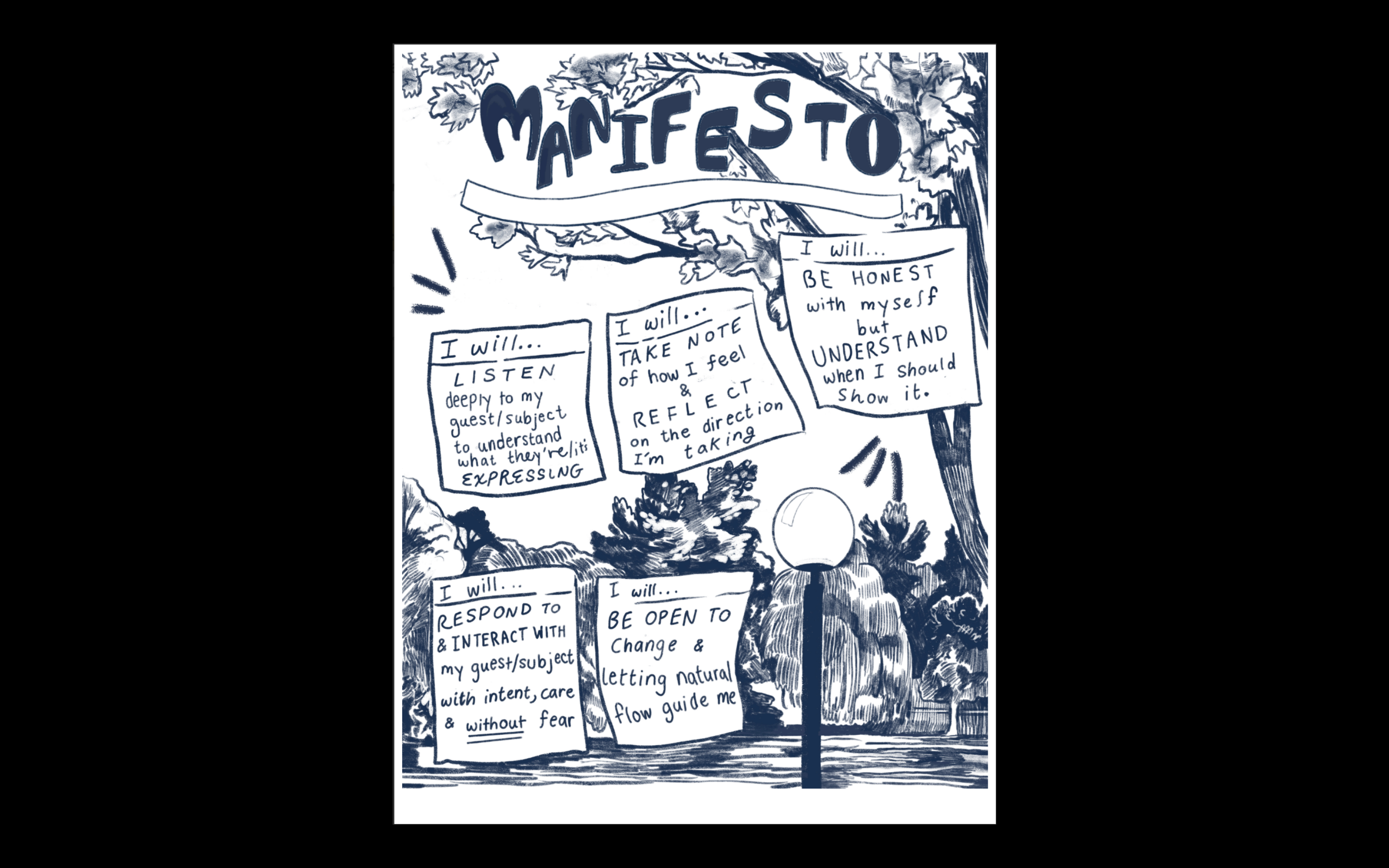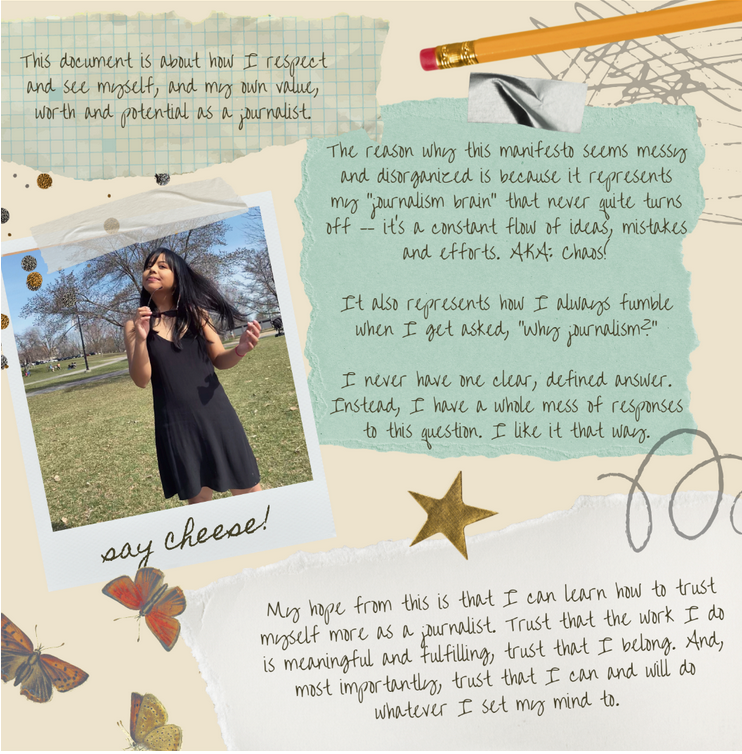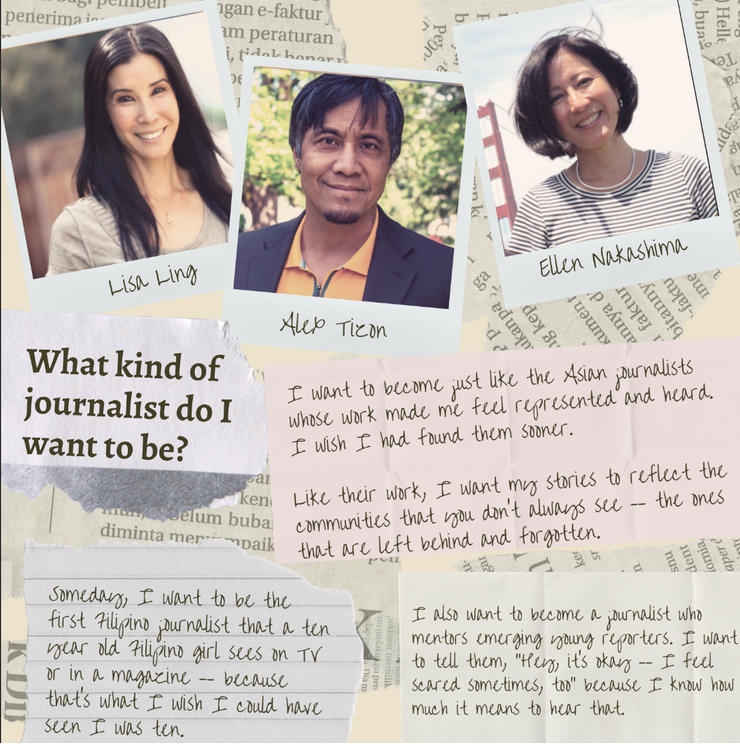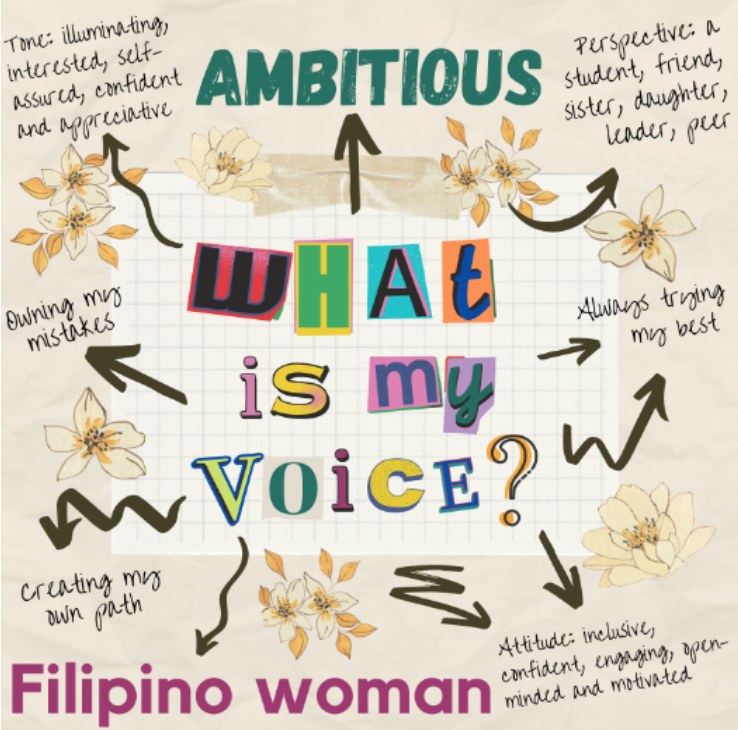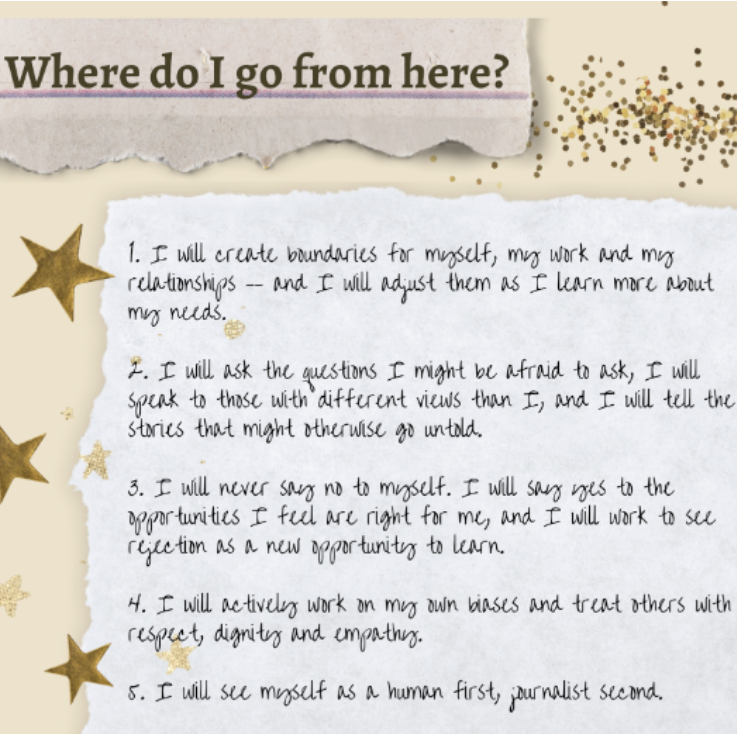In my third-year Journalism and Belonging class at Carleton University, I help future journalists recognize the necessity of diversity and inclusion in reporting, and how discrimination and bias can affect editorial decisions and career progression in journalism. I also offer students an opportunity to consider the overarching question of the kind of journalist they want to be, and the framework with which they will achieve that goal. To help, I created an activity and assignment called the Journalism Manifesto.
The Journalism Manifesto is essentially a promise you make to ground yourself in your values as a journalist and how you want to conduct yourself. Stemming from work I did to help students discover their voice in a podcast course, the manifesto is meant to be an introspective exercise. It is a way for people to think about who they are as individuals, and to locate themselves in the world, so they can consider their relationship to the other humans they encounter as they work, from people they interview to teammates and colleagues.
I intentionally placed this activity in the course after students have considered themselves in relation to the social identity wheel, which encourages critical reflection on one’s social identities and how those identities can shift with context. Then, borrowing elements from literary studies, I encourage students to consider their own perspective, tone and attitude at work. The perspective aspect is how students can actively think about where they sit in the world, perhaps privileged in some ways and underprivileged in others. For example, I am a thick Black woman who was born in Ghana. I have been called the N-word and have experienced humiliating moments as a result of racial discrimination. My parents were a taxi driver and a cook in Canada who previously had careers as a computer systems analyst and primary teacher before they immigrated. They both had post-secondary degrees. I have a masters degree, am non-disabled and married to a white man. How do these things inform my experience? What do I worry about? What do I never worry about?
After thinking about their perspective, tone and attitude, students then create a set of statements that will guide them through their career. These statements, like “I will be confident in my abilities as a reporter” or “I will not let my lisp limit me from speaking up and out” or “I will ask questions I might be afraid to ask,” serve as a sort of North Star, grounding journalists in their purpose and values. While I find it embarrassing to share, in the interest of giving you an example, here is my own manifesto, which I wrote before leading anyone else through the exercise.
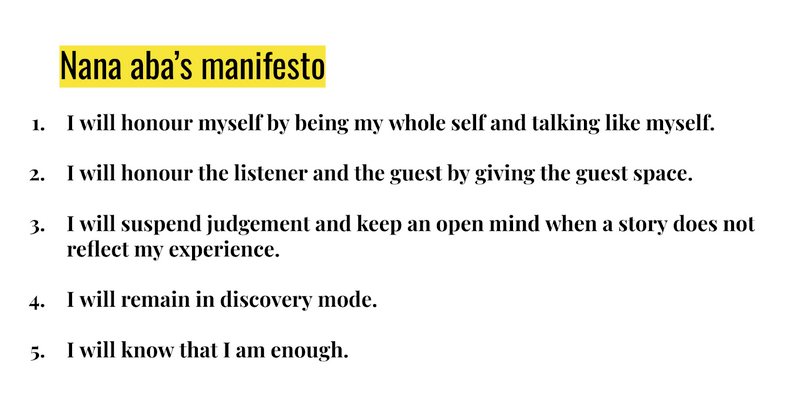
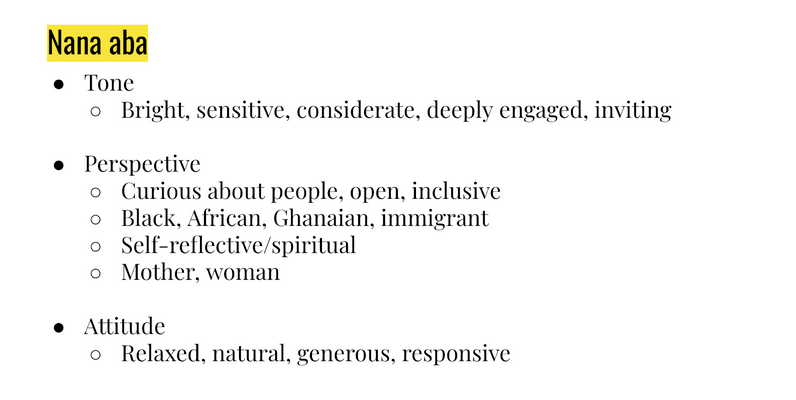
Often, a manifesto reveals a person’s vulnerability or insecurities. Mine displays a regular concern I had about my work as a radio host: whether I was enough, good enough to be precise, to do the job. Opening up to yourself about worries like these and then actively writing affirmations around them can provide some healing and help to shift your focus on what you’re determined to do.
If this all sounds a bit touchy-feely or vision board-y, it is. And the response has been positive. Beyond the classroom, I facilitate the Journalism Manifesto activity with working journalists. In about one hour, I lead people to think about the kind of journalist they wanted to be when they first started out and then to imagine the best versions of themselves as journalists, and to write a description of this on paper. They then proceed through a similar path I take my students through in the manifesto. In feedback surveys, participants have noted an appreciation for being able to take the time to reflect on their own identities in relation to others, as well as how they’re operating in the workspace. Some of my colleagues at Carleton University have completed the activity and asked me to facilitate the activity for their graduate students over the last three years.
Typically, journalists aren’t very good at rest. Nor are we encouraged to do so. Rather, we are taught and pushed to go, go, go, in a culture of quick production at high standards amidst relentless and rapid news cycles. It is thrilling and fulfilling and stressful and depleting. It can make you want to aim for better, more impactful stories, and it can make you want to lie still on the floor for hours. It is no wonder that with no time to stop, the idea of considering one’s purpose as a journalist gets lost in the grind of the work. Burnout chases us and, particularly with the stress of the pandemic, it has gripped some of us firmly, causing us to eye other industries where our talents are useful.
As a professor, researcher, journalist and parent myself, I simply don’t carve enough time out for myself to practice rest and reflection. But when I do, I reap the reward of a refreshed mind, one that generates ideas and projects that have served both myself and my communities. As a William Southam Massey Journalism Fellow at the University of Toronto in 2020, I had plenty to reflect on. Mostly I wondered what on earth I was going to do with my skills as a journalist and an emerging leader, and as a Black woman hurt by George Floyd’s murder and racism at work. I grappled with what my next move would be, and resolved – maybe naively – to help make our industry better and serve underrepresented and undervalued communities.
The idea for the Journalism Manifesto was seeded while I was a fellow, during a leadership course with Prof. Nouman Ashraf at the Rotman School of Business. An introspective assignment led me to take things further and develop a personal mission focused on serving others. I keep it close and return to it when I feel wobbly or restless. The clarity it brought was so helpful that when I later developed Journalism and Belonging, I knew I would incorporate a similar activity.
To give life to their manifestos, I encourage students to use art, which has resulted in beautiful, thoughtful work. Now a Toronto-based reporter at the Canadian Press, Rianna Lim created a visual Journalism Manifesto as a student. In a scrapbook style representing what she calls an always-on “journalism brain,” Rianna added thoughts about what she felt she deserved as a journalist, including safety in a newsroom.
While Rianna wrote her manifesto as a student, she says it has become even more meaningful now that she works in a busy newsroom. “It seems like every day in the newsroom I’ve been confronted with a new question about who I am beyond my bylines,” she wrote when I asked her to reflect on its impact. “One of the major themes in my manifesto was the idea of trusting myself, my work, and my potential, and along with these themes, what I deserve in my career and in my life more generally. I think this activity laid the groundwork for the hope I had in the reporter I want to become. It also helped me reflect on why I chose this career in the first place.”
Sara Mizannojehdehi is a graduate student at Concordia University, and a multidisciplinary illustrator and graphic designer. When she was a bachelor of media production and design student at Carleton, she took my Storytelling with a Focus on Podcasting course and completed the voice-focused version of the Journalism Manifesto. Sara wove in the teachings of the class from my own lectures and other guest lecturers from the podcasting industry into the manifesto using her skills as a graphic designer. The result, which you can see here, was a sort of zine-like work.
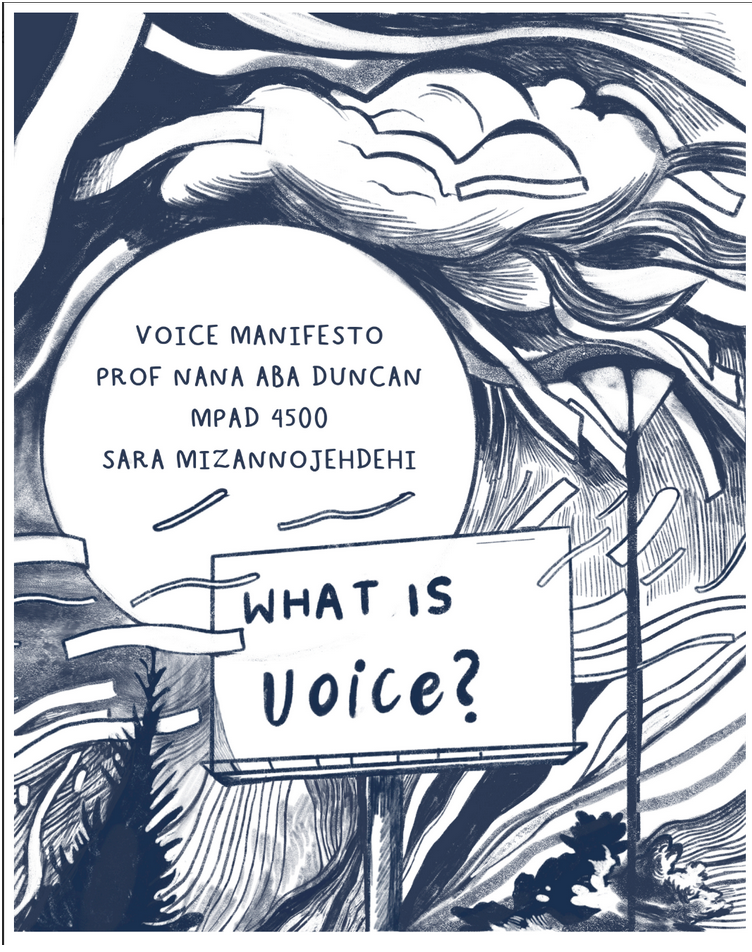
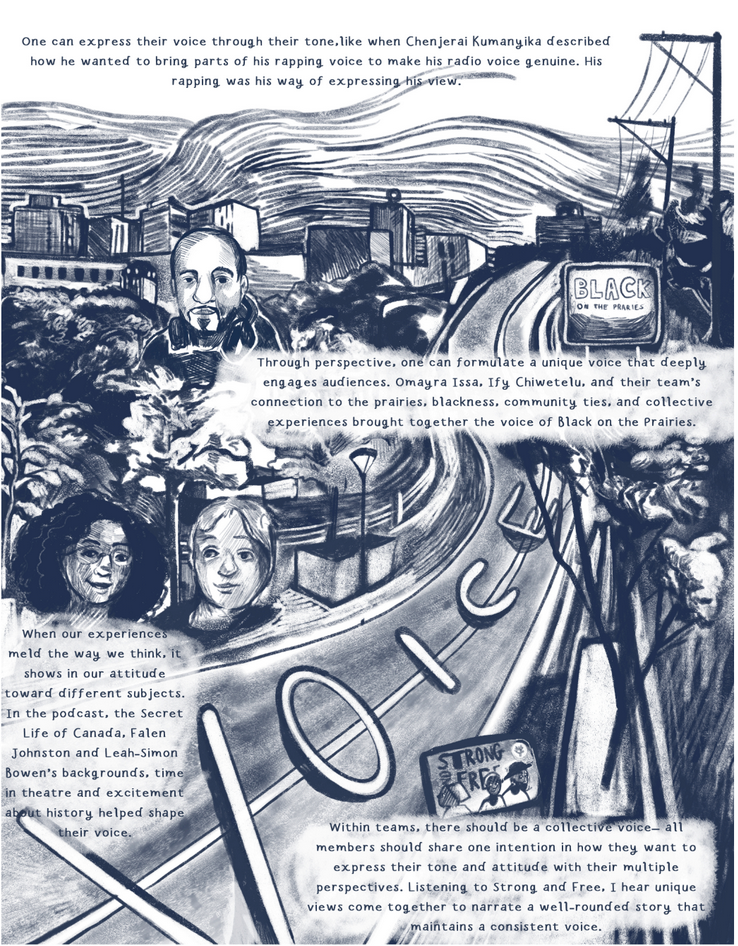
Sara thinks of the voice manifesto assignment when she’s having trouble starting a difficult piece. “When I feel my self-confidence faltering, I refer to it as a guideline of who I am … I’m very proud of it, so it also reminds me that I can develop a piece of work that I love. I’m a writer and an artist, and those often feel separate from each other in journalism, but by writing the manifesto, I realized my voice in both fields grows from the same intention. Whether it is a feature or an illustration, I want to cultivate belonging and shared understanding from my work.” I love that Sara created the manifesto while sitting by the Rideau Canal, a place which brought her a feeling of connection.
I have seen how my own confidence and goals have evolved every time I write my manifesto. I share it here hoping that it can help more student journalists to take a moment to reflect on their purpose in doing the work. If you are interested in learning more about how it can work as an activity within a workshop or class setting, please get in touch.
The Journalism Manifesto Assignment
A manifesto is a list of statements that help you commit to being true to your own voice. What is your journalism manifesto, using terms defined in class? In any format including collage, audio, visual, etc., describe your manifesto on who you are as a journalist.
Reflect on your voice, and write the following:
- What is your voice according to tone, perspective and attitude?
- What are five to seven statements that will help you stay true to that voice?
- Take a look at your manifesto. How could this manifesto help you in your career?
- For fun: after you have completed the assignment, be creative and make this into an illustration/graphic/art you can keep for yourself.
Nana aba Duncan is an associate professor and Carty Chair in Journalism, Diversity and Inclusion Studies at Carleton University, where she is launching the Mary Ann Shadd Cary Centre for Journalism and Belonging. She is also the cofounder of Media Girlfriends, a production company led by journalists of colour.

